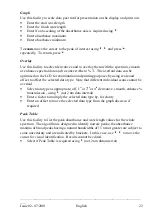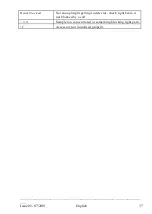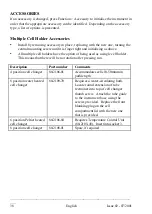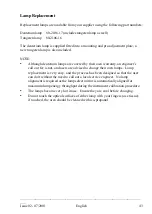
________________________________________________________________
___
Issue 02 - 07/2001
English
31
Substrate
Reagent test kits are routinely used for the enzymatic determination of compounds in
food, beverage and clinical laboratories; an example is measurement of NAD / NADH
conversion at 340 nm. The change in absorbance over a specified time period can be
used to provide useful information when an appropriate factor is applied; the start
and end times as well as the factor are defined in the reagent kit protocol. The curve
fit usually used is linear regression.
Note that reaction rate and enzyme activity can be calculated if the factor used takes
account of the absorbance difference per unit time, as opposed to the absorbance
difference
per se
.
If a factor needs to be applied to a change in absorbance with time, use the kinetics
application.
Set up
•
Enter the wavelength
•
Select the curve type from linear regression, linear interpolation, spline using
4
•
Enter the number of standards, maximum is 9
•
Enter the number of replicates for each standard, maximum is 3
•
Enter the number of replicates for the samples, maximum is 3
•
Select units using
4
Timing
•
Select time units, seconds or minutes, using
4
•
Enter the delay time over which no measurement should be taken (range 0-1000)
•
Enter the length of reaction
Concs
•
Enter the concentrations of the standards in increasing order
•
Enter the integration time using
4
•
Default is 0.1 second, other options are 1, 2, and 5 seconds. Use long
integration times for very low and very high absorbance readings.
•
Save method parameters if required using
4
•
To save the actual data, return to this mode by pressing
mode
after running
the set of standards, and then save the method parameters and data
together.
















































